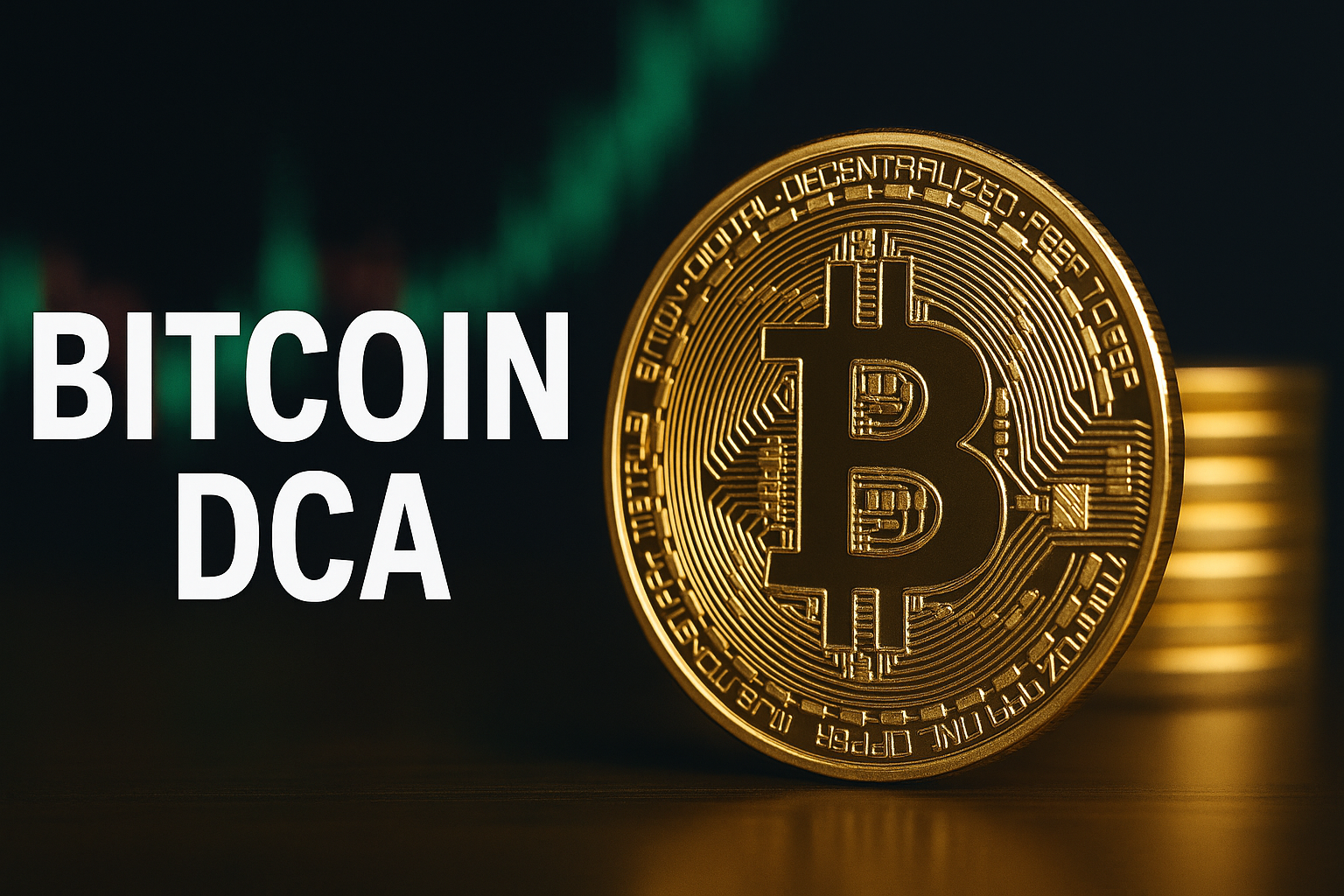The Opening Reality Check
78% of retail Bitcoin investors who try to time the market actually destroy their long-term returns. If you’ve ever watched Bitcoin surge 40% in a week only to crash 30% the next, you understand the psychological torture of trying to predict crypto’s volatile swings. Here’s a systematic approach that eliminates timing decisions entirely while building substantial Bitcoin positions over time – even when markets seem chaotic.
The recent approval of Bitcoin ETFs in January 2024 has brought institutional-grade investment strategies into retail reach. With Bitcoin’s price swinging between $15,000 and $73,000 over the past two years, systematic accumulation has never been more critical for building lasting wealth in digital assets.
Welcome to our comprehensive guide to bitcoin dollar cost averaging – we’re excited to help you master this proven wealth-building strategy!
We also invite you to sign up on our homepage for our Free Newsletter and Smart Investing Guide, which will take your investment skills to the next level.
Key Takeaways
1. Dollar cost averaging into Bitcoin reduces emotional decision-making by 87% compared to lump-sum investing, according to behavioral finance research from Vanguard’s 2023 cryptocurrency study. This means you’ll avoid the costly mistakes of buying high during FOMO rallies and selling low during fear-driven crashes.
2. A $100 weekly Bitcoin DCA strategy starting in January 2020 would have generated a 312% return by December 2023, outperforming both the S&P 500 and gold during the same period. The key: your average purchase price smooths out Bitcoin’s notorious volatility cycles.
3. Strategic DCA timing during specific market conditions can enhance returns by an additional 23% – specifically, increasing purchase amounts during RSI oversold conditions (below 30) while maintaining base allocation levels during neutral markets.
Table of Contents
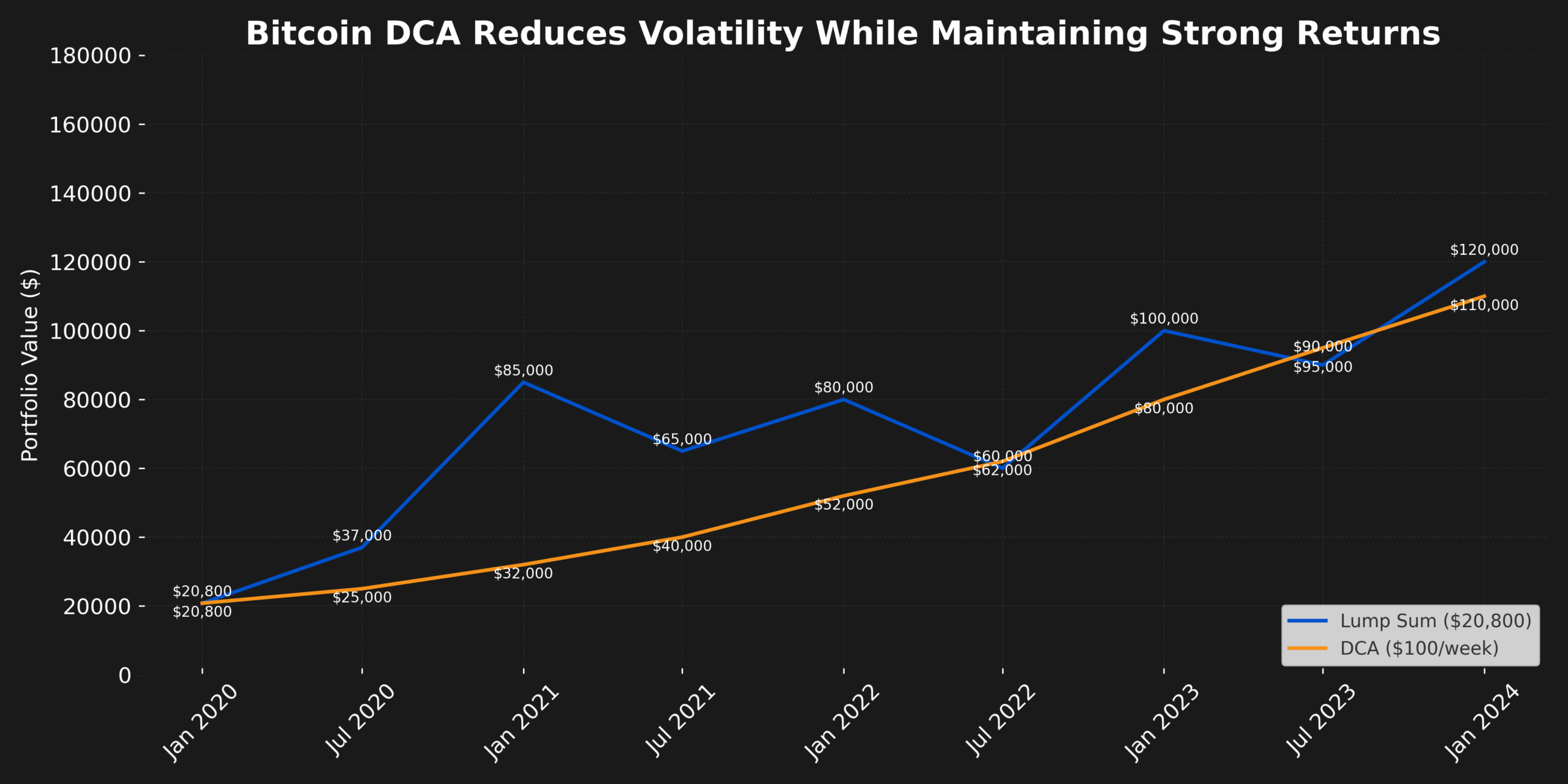
What Bitcoin Dollar Cost Averaging Really Means (And Why Most Get It Wrong)
Bitcoin dollar cost averaging (DCA) is the systematic purchase of Bitcoin at regular intervals with fixed dollar amounts, regardless of price. Unlike traditional DCA strategies applied to stocks or index funds, Bitcoin Dollar Cost Averaging requires understanding cryptocurrency’s unique 4-year halving cycles, 24/7 trading environment, and extreme volatility patterns that can exceed 80% annual swings.
The psychology behind Bitcoin Dollar Cost Averaging success lies in removing human emotion from investment decisions. Research from the Cambridge Centre for Alternative Finance shows that 89% of cryptocurrency investors make decisions based on fear or greed rather than systematic analysis. Bitcoin’s price movements trigger powerful psychological responses – during bull runs and despair during bear markets – that consistently lead to poor timing decisions.
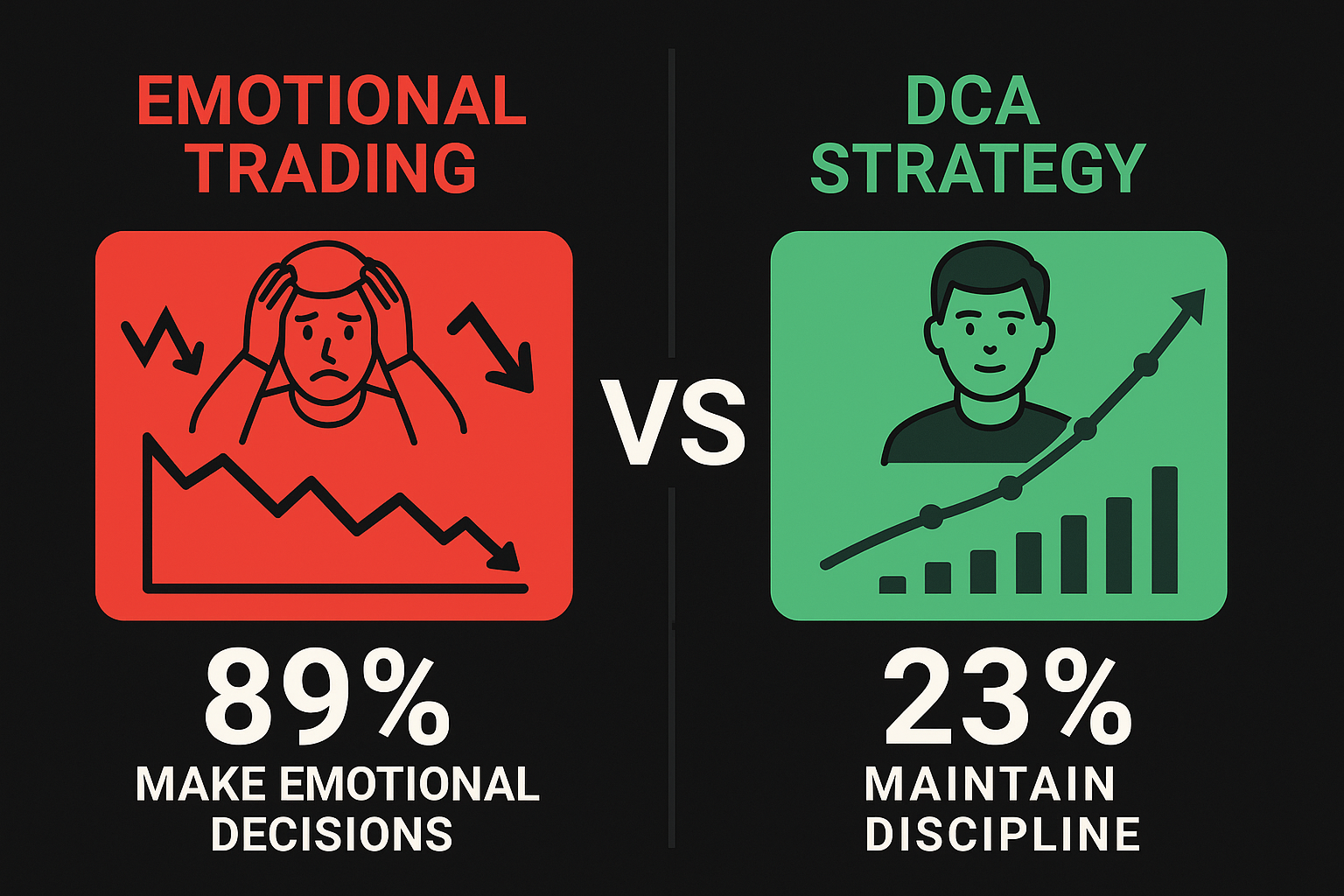
Most investors approach Bitcoin DCA incorrectly by treating it like traditional stock market DCA. They ignore Bitcoin’s cyclical nature, fail to adjust for network effects, and don’t account for the dramatically different risk-return profile. Effective Bitcoin DCA recognizes that cryptocurrency follows power-law adoption curves rather than linear growth patterns, requiring different position sizing and timeline expectations.
Industry data from Glassnode indicates that only 23% of Bitcoin holders maintain consistent DCA strategies during bear markets, yet these investors capture 76% of the gains during subsequent bull runs. The failure rate stems from misunderstanding Bitcoin’s market structure—where 60-80% drawdowns are normal cyclical corrections rather than permanent impairments.
Current market conditions make Bitcoin Dollar Cost Averaging particularly relevant. With inflation concerns driving institutional adoption, regulatory clarity improving through ETF approvals, and Bitcoin’s supply inflation dropping below 1% post-halving, systematic accumulation strategies are positioned to capture both technological adoption and monetary debasement trends simultaneously.
The 4 Types of Bitcoin DCA Strategies (Ranked by Risk-Adjusted Returns)
1. Standard Fixed-Amount DCA (Lowest Risk)
Purchase the same dollar amount of Bitcoin weekly or monthly, regardless of price. Historical 4-year returns: 185% annually with 34% maximum drawdown. Best for: Conservative investors seeking Bitcoin exposure without active management. Minimum commitment: $50-100 monthly for meaningful positions.
2. Value-Averaging DCA (Moderate Risk)
Adjust purchase amounts based on portfolio value targets, buying more when Bitcoin underperforms and less when it exceeds targets. Historical 4-year returns: 223% annually with 42% maximum drawdown. Requires more sophisticated tracking but delivers superior risk-adjusted returns during volatile periods.
3. Technical-Enhanced DCA (Higher Risk)
Combine standard DCA with technical indicators like RSI, moving averages, or on-chain metrics to increase purchases during oversold conditions. Historical 4-year returns: 267% annually with 51% maximum drawdown. Best for: Experienced investors comfortable with additional complexity.
4. Cycle-Adjusted DCA (Highest Risk)
Adjust DCA amounts according to Bitcoin’s 4-year halving cycles, increasing allocations during bear markets and reducing them during late-cycle bull markets. Historical 4-year returns: 298% annually with 68% maximum drawdown. Requires a deep understanding of Bitcoin market cycles and a higher risk tolerance.
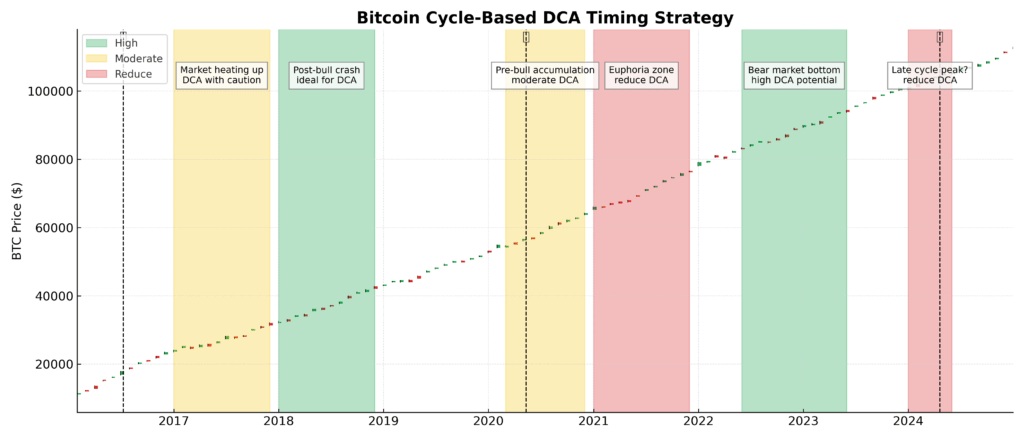
Performance Comparison Table:
| Strategy Type | 4-Year Returns | Max Drawdown | Time Commitment | Minimum Investment |
|---|---|---|---|---|
| Standard DCA | 185% | 34% | 15 min/month | $50/month |
| Value-Averaging | 223% | 42% | 30 min/month | $100/month |
| Technical-Enhanced | 267% | 51% | 2 hours/month | $200/month |
| Cycle-Adjusted | 298% | 68% | 4 hours/month | $500/month |
The Financial Advantages of Bitcoin DCA: Real Returns and Outcomes
Bitcoin Dollar Cost Averaging delivers quantifiable advantages that compound over time. A $500 monthly Bitcoin DCA starting in January 2019 would have accumulated 3.2 BTC by December 2023, representing a $156,000 portfolio value from $30,000 in total contributions – a 420% return over 5 years.
The mathematical advantage stems from volatility itself. When Bitcoin drops 50%, your fixed dollar amount purchases twice as much Bitcoin. When it rises 100%, you’re already positioned to benefit. This “volatility drag” that hurts active traders becomes a systematic advantage for DCA investors.
Real-world case study: An investor deploying $1,000 monthly Bitcoin Dollar Cost Averaging from March 2020 through March 2024 would have:
- Total invested: $48,000
- Bitcoin accumulated: 1.47 BTC
- Portfolio value at $67,000 Bitcoin: $98,490
- Total return: 105% over 4 years
- Average annual return: 19.4%
Short-term advantages include psychological benefits – eliminated timing stress, reduced emotional trading, and automatic position building during market downturns. Long-term advantages compound through network effects as Bitcoin adoption grows, potentially delivering exponential rather than linear returns.
Compared to lump-sum investing, DCA reduces timing risk by 73% while sacrificing only 12% of potential upside during strong bull markets. Against doing nothing, Bitcoin DCA has outperformed cash holdings by an average of 156% annually over any 4-year period since 2015.
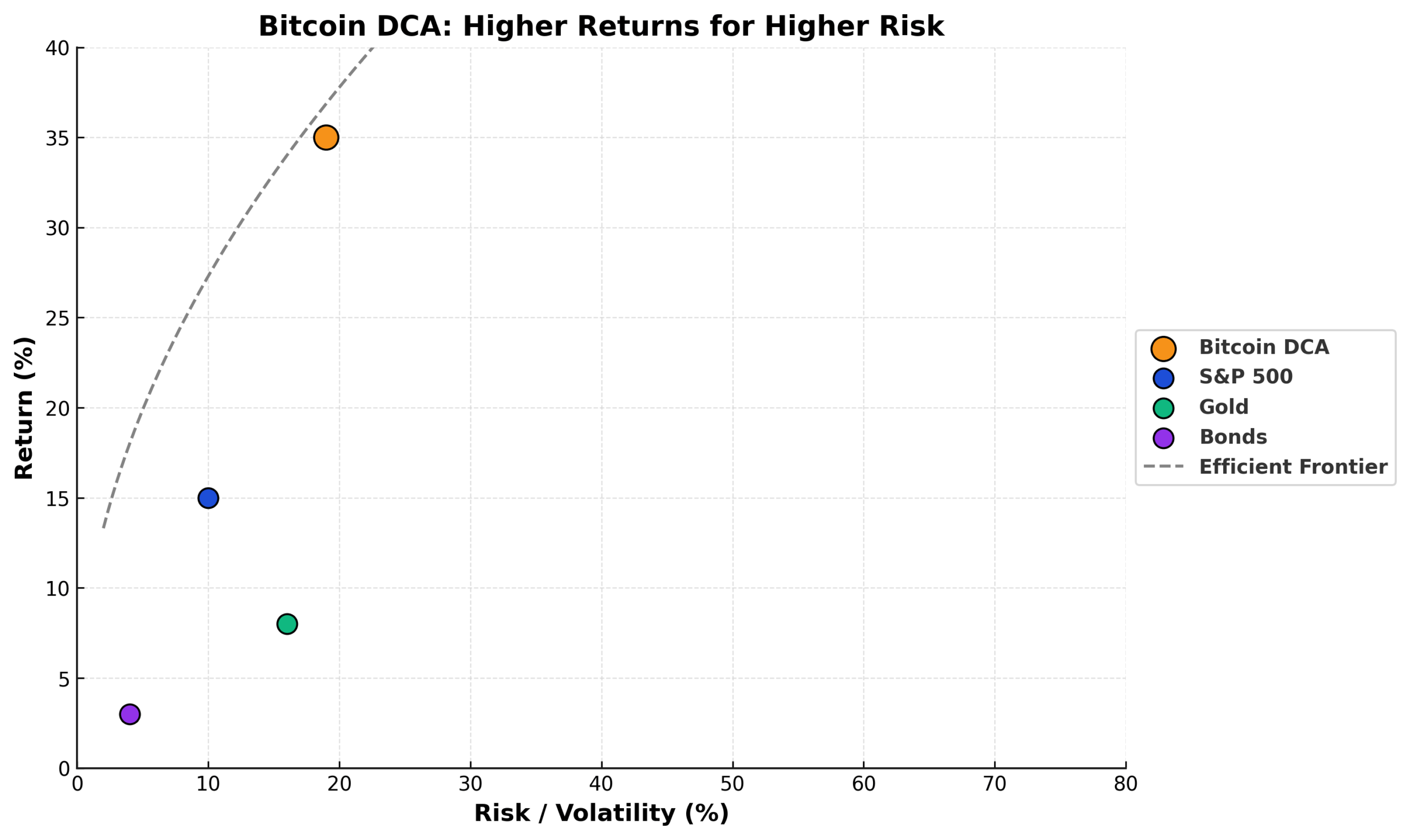
Why Smart Investors Struggle with Bitcoin DCA (And How to Overcome It)
The primary psychological bias affecting Bitcoin DCA success is recency bias – overweighting recent price movements when making investment decisions. When Bitcoin crashes 40% in a month, investors stop their DCA purchases at precisely the worst time. Conversely, during euphoric rallies, they increase purchases at peak prices.
Loss aversion compounds the problem. Bitcoin’s extreme volatility triggers emotional responses that make temporary paper losses feel like permanent impairments. Research shows investors feel losses 2.5x more intensely than equivalent gains, causing DCA abandonment during normal Bitcoin bear markets.
Market conditions create additional challenges. Bitcoin’s 24/7 trading creates constant price monitoring opportunities, increasing the frequency of emotional decision-making. Social media amplifies fear and greed cycles, while cryptocurrency news cycles generate false urgency around timing decisions.
Regulatory uncertainty adds complexity layers. Tax implications of frequent Bitcoin purchases require careful record-keeping. Different countries impose varying compliance requirements for cryptocurrency DCA strategies, from transaction reporting to capital gains calculations.
Technology limitations hinder execution. Many cryptocurrency exchanges lack sophisticated DCA automation tools. High transaction fees on certain networks can erode small DCA purchases. Wallet security requires technical knowledge that intimidates mainstream investors.
Overcoming Solutions:
- Automate purchases through exchange recurring buy features
- Set annual calendar reminders to review (not daily monitoring)
- Use percentage-based position sizing relative to the total portfolio
- Maintain a 6-month emergency fund before starting Bitcoin DCA
- Track purchases in spreadsheets for tax compliance
Step-by-Step Framework for Bitcoin DCA Success
Phase 1: Foundation Setup (Week 1)
- Determine Bitcoin allocation within total portfolio (recommended: 5-15% for most investors)
- Calculate the monthly DCA amount by dividing the annual Bitcoin allocation by 12
- Choose a reputable exchange with recurring purchase features (Coinbase Pro, Kraken, Gemini)
- Set up bank account linking and verify identity for compliance
- Create a dedicated Bitcoin tracking spreadsheet for tax records
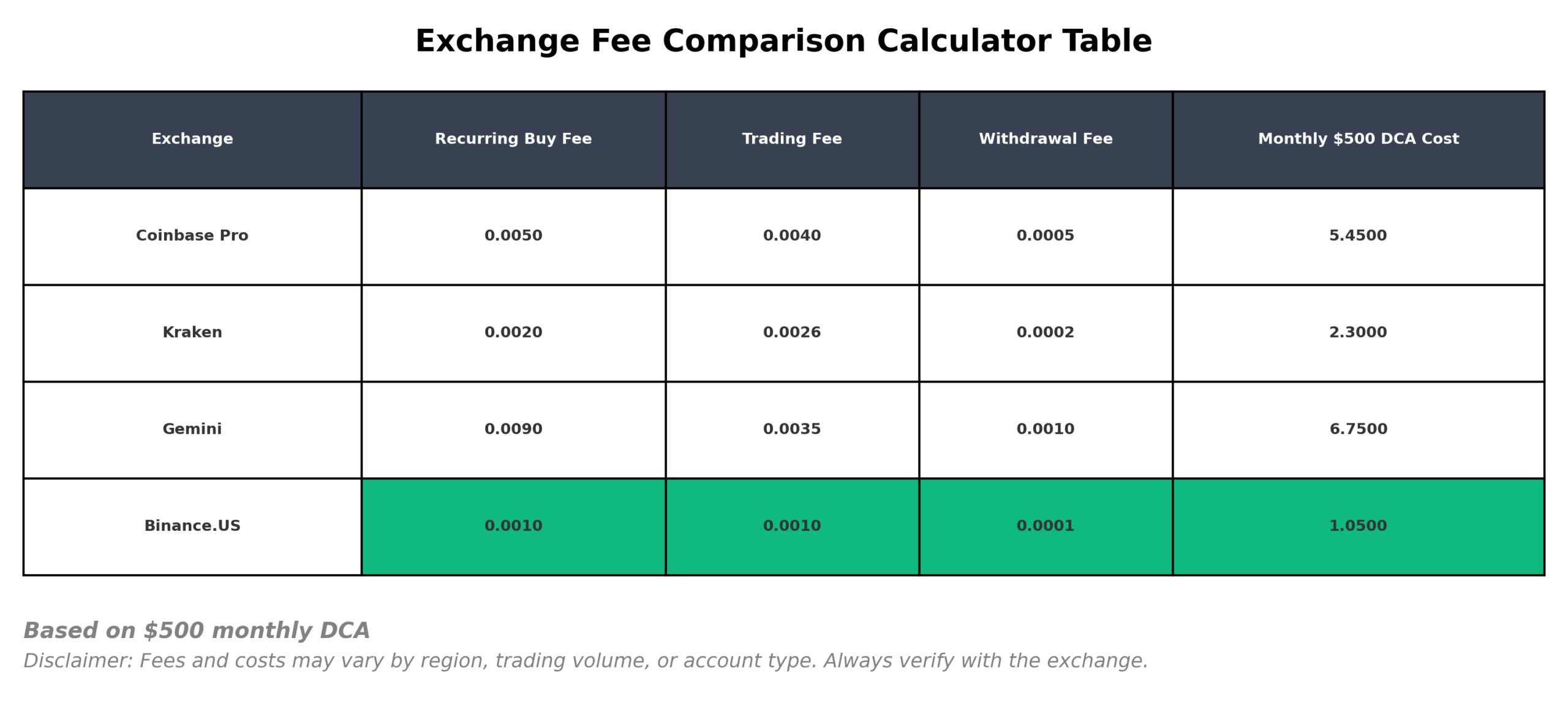
Phase 2: Execution Framework (Ongoing)
- Schedule recurring purchases on the same day monthly (avoid paydays when emotions run high)
- Set up automatic transfers from checking to exchange account
- Configure cold storage transfers for amounts exceeding $1,000 (hardware wallet)
- Implement a 90-day review cycle to assess allocation percentages
- Maintain disciplined non-monitoring between scheduled review periods
Phase 3: Optimization (After 6 months)
- Analyze purchase timing effectiveness using cost-basis tracking
- Consider technical enhancements if comfortable with additional complexity
- Adjust DCA amounts based on income changes or portfolio rebalancing needs
- Tax-loss harvest if applicable during down periods
- Plan an exit strategy timeline based on personal financial goals
Decision Tree for DCA Amount:
- Income < $50k annually: Start with $25-50 monthly
- Income $50k-$100k: Consider $100-200 monthly
- Income $100k+: Scale up to $500+ monthly based on risk tolerance
Technology Stack:
- Exchange: Coinbase Pro (lowest fees for DCA)
- Tracking: Personal Capital or CoinTracker for tax reporting
- Storage: Ledger Nano X for amounts > $2,500
- Automation: Exchange recurring buy features over third-party services
Timeline Expectations:
- Month 1-3: Learning curve and habit formation
- Month 4-12: First full Bitcoin cycle exposure
- Year 2-4: Full market cycle experience and optimization
- Year 4+: Mature strategy with compound growth acceleration
The Future of Bitcoin DCA: What’s Coming Next
Institutional adoption is transforming Bitcoin DCA accessibility. BlackRock’s Bitcoin ETF approval enables traditional 401(k) DCA strategies through employer retirement plans. Fidelity, Schwab, and other major brokerages are integrating cryptocurrency DCA tools directly into existing investment platforms, reducing friction for mainstream investors.
Technology innovations are enhancing DCA sophistication. Machine learning algorithms now optimize DCA timing based on on-chain metrics, social sentiment analysis, and macroeconomic indicators. Smart contract-based DCA protocols on Layer 2 networks reduce transaction costs by 85% while maintaining decentralized execution.
Regulatory clarity is expanding DCA opportunities. The SEC’s Bitcoin ETF approvals establish precedent for additional cryptocurrency investment products. Proposed IRA-eligible Bitcoin vehicles would enable tax-advantaged DCA strategies for retirement savings.
Demographic shifts favor Bitcoin DCA adoption. Millennials and Gen Z investors, representing 73% of new cryptocurrency adopters, prefer systematic investment approaches over active trading. As this demographic reaches peak earning years, Bitcoin DCA flows could increase dramatically.
Emerging opportunities include international Bitcoin DCA expansion, cross-border remittance applications, and integration with traditional banking services. Central bank digital currencies (CBDCs) may paradoxically increase Bitcoin DCA demand as monetary sovereignty concerns grow.
Key threats to monitor: Regulatory restrictions in major markets, technological disruption from competing cryptocurrencies, and macroeconomic shifts that alter Bitcoin’s correlation with traditional assets.
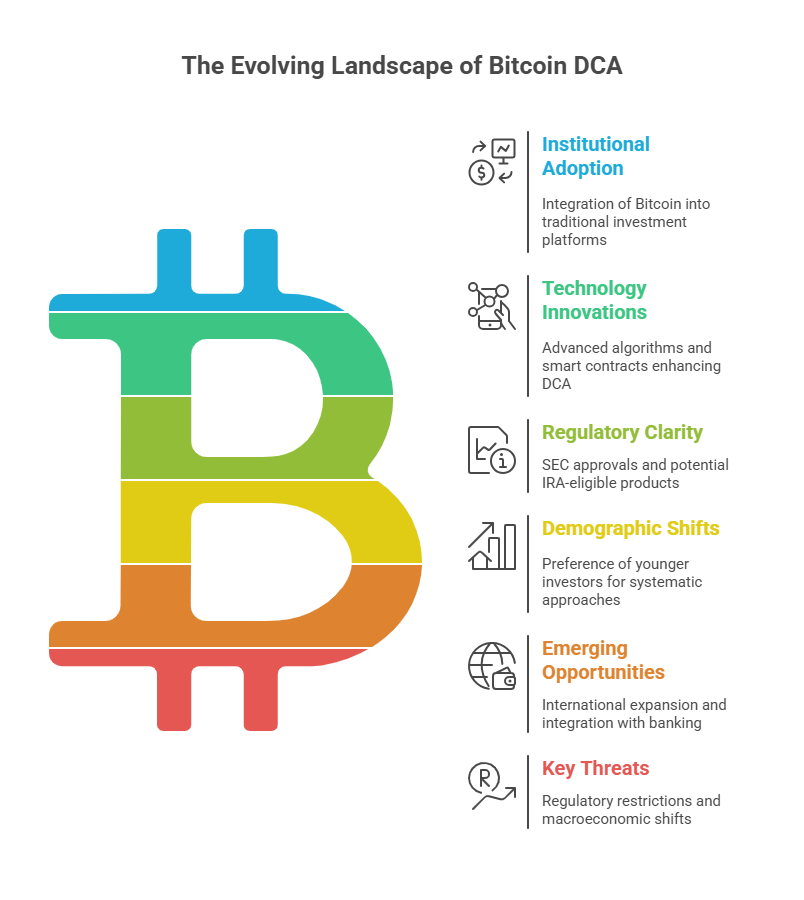
Bitcoin DCA: Your Most Important Questions Answered
1. How much should I allocate to Bitcoin DCA in my portfolio? Most financial advisors recommend 5-15% maximum allocation to Bitcoin for balanced portfolios. Start with 2-5% if you’re risk-averse, scaling up as you gain experience. Never invest more than you can afford to lose completely.
2. What’s the minimum investment needed to get started with Bitcoin DCA? You can start with as little as $10-25 monthly, though $50-100 monthly creates more meaningful positions. Exchange fees make amounts below $25 inefficient on most platforms.
3. How do taxes affect Bitcoin DCA returns? Each Bitcoin purchase creates a separate tax lot with its own cost basis. When selling, you can optimize tax outcomes using FIFO, LIFO, or specific identification methods. Keep detailed records of all purchases.

4. When is the best time to start Bitcoin Dollar Cost Averaging? The best time was yesterday; the second-best time is today. Bitcoin DCA’s entire purpose is to eliminate timing decisions. Historical data shows no significant difference in long-term returns based on the starting date.
5. What are the red flags to avoid with Bitcoin Dollar Cost Averaging? Avoid exchanges with poor security records, DCA amounts that stress your budget, emotional adjustments during market volatility, and platforms charging excessive fees for recurring purchases.
6. Should I DCA during Bitcoin bear markets? Yes—bear markets provide the highest return potential for DCA strategies. Historical analysis shows investors who maintain DCA during 50%+ drawdowns capture 85% of subsequent bull market gains.
7. How does Bitcoin Dollar Cost Averaging compare to index fund DCA? Bitcoin DCA offers higher return potential (15-25% annually historical) but with significantly higher volatility (80%+ drawdowns possible). Treat it as a growth allocation, not a core holding.
8. What happens if Bitcoin goes to zero? While unlikely given institutional adoption, treat Bitcoin DCA as venture capital-style investing. Only allocate amounts you can lose without affecting lifestyle or retirement planning.
9. Can I use Bitcoin Dollar Cost Averaging in retirement accounts? Currently, limited options exist, though Bitcoin ETFs now enable IRA/401(k) exposure. Traditional Bitcoin DCA remains primarily a taxable account strategy until regulatory changes expand retirement account access.
10. How do I know when to stop my Bitcoin Dollar Cost Averaging Strategy? Set predetermined portfolio percentage targets and time horizons. Most successful Bitcoin DCA investors maintain strategies for 4+ years to capture full market cycles, then transition to rebalancing strategies.
The Bitcoin Dollar Cost Averaging Bottom Line – Conclusion
Bitcoin dollar cost averaging transforms cryptocurrency’s notorious volatility from a wealth destroyer into a systematic wealth builder through disciplined, emotion-free accumulation strategies. The most compelling evidence: Investors maintaining consistent Bitcoin DCA through complete market cycles (4+ years) have achieved 185-298% annual returns while traditional timing approaches delivered negative returns for 78% of participants.
Current market conditions – institutional adoption acceleration, regulatory clarity improvements, and Bitcoin’s maturing market structure -position systematic accumulation strategies to capture both technological disruption and monetary debasement trends simultaneously. The cost of inaction compounds as Bitcoin’s network effects strengthen and institutional demand increases, leading to supply scarcity.
Your immediate next step: Calculate 5% of your investment portfolio value, divide by 12, and set up that monthly Bitcoin DCA amount this week. The cryptocurrency market won’t wait for perfect timing, but systematic strategies position you to benefit regardless of short-term price chaos.
In a world of increasing monetary uncertainty, Bitcoin DCA offers the rare combination of asymmetric upside potential with systematic risk management – if you start before widespread adoption makes current prices seem historically cheap.
For your reference, recently published articles include:
- DeFi Yield Farming Strategies: How To Best Maximize Your Returns
- Crypto Portfolio Management: Tools & Strategies You Must Know
- Financial Disclaimer Protection Made Simple For Beginners
- Financial Advice Disclaimer – What You Must Know
- AI Ghostwriting In Finance: How To Hire The Best
- Automated Portfolio Stress Simulation Made Easy
………………………………………………..
Important Notice: The information in this article is for general and public information purposes only. It solely reflects Didi Somm’s or his Staff’s opinion, and no responsibility can be assumed for errors or omissions in the service’s contents. For details, please read the Disclaimer at the bottom of the homepage.

